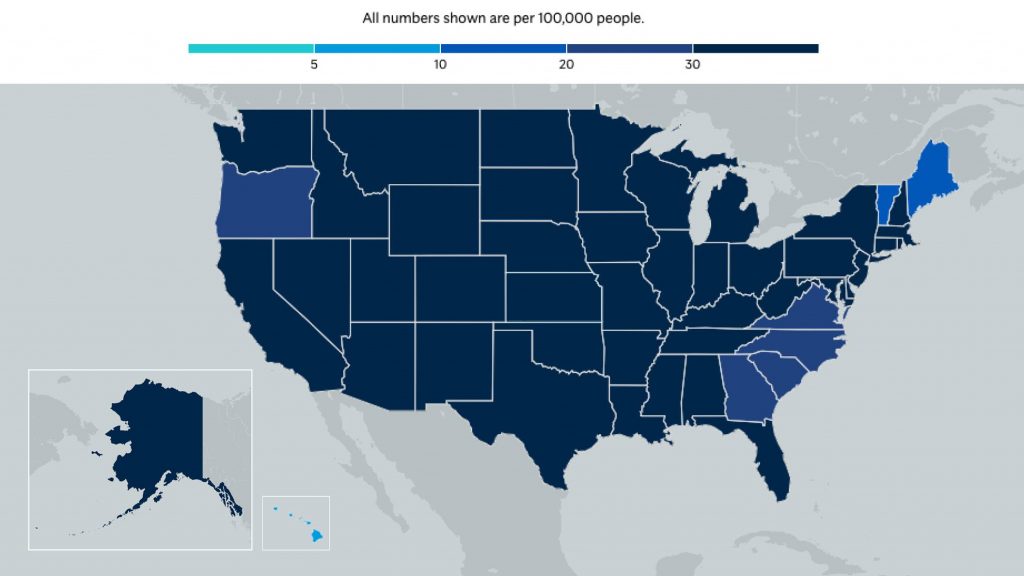
DEAR MAYO CLINIC: As the COVID-19 pandemic continues, I am hearing things about the virus and treatment options that seem to conflict with information I read early on. I'm not sure what information I can trust. Can you clear up some of the top myths regarding COVID-19?
ANSWER: The virus now known as COVID-19 is continuing to make headlines worldwide. Chances are that you have heard different theories about the virus, how it spreads and the severity of illness it causes. Information about COVID-19 has been changing rapidly as scientists are learning about the virus.
Below are the facts regarding some of the top myths:
Myth: Spikes in COVID-19 cases are because of increased testing.
Fact: The rise in infections is not related to increased testing. More concerning than the number of tests performed is the increasing percentage of positive results. This means that the virus is spreading quickly in communities.
COVID-19 testing is critical, as it helps people decide whether to self-isolate and guides health care providers' decisions for medical treatment. Widespread testing also allows local health departments to monitor the spread of the virus and make recommendations to schools and businesses.
Myth: Herd immunity can be achieved by letting the virus spread through the population.
Fact: Herd immunity occurs when a large portion of a community ― the herd ― becomes immune to a disease. This makes the spread from person to person unlikely. As a result, the whole community becomes protected — not just those who are immune.
There are some significant problems with relying on community infection to create herd immunity to the virus that causes COVID-19. First, it isn't yet clear if infection with the COVID-19 virus makes a person immune to future infection. If it does not create immunity, then the herd immunity concept will not work.
Even if COVID-19 infection creates long-lasting immunity to SARS-CoV-2, the virus that causes COVID-19, a large number of people would have to become infected to reach the herd immunity threshold. Experts estimate that 70% of the U.S. population — more than 200 million people — would have to recover from COVID-19 to halt the epidemic. This amount of infection could lead to serious and potentially long-term complications and millions of deaths. And if many people become sick with COVID-19 at once, the health care system could quickly become overwhelmed.
Myth: Only the elderly or those with underlying health conditions will get very ill and require hospitalization for COVID-19.
Fact: People of all ages, including children, can contract COVID-19 and could be hospitalized due to the severity of their illness. The risk of developing dangerous symptoms from COVID-19 may be greater in people who are older or in people of any age who have other serious health problems, such as heart or lung conditions, weakened immune systems, severe obesity, or diabetes.
Myth: COVID-19 is no worse than the seasonal flu.
Fact: It is likely that you may have heard that COVID-19 is similar to the flu. While both COVID-19 and the flu are contagious respiratory diseases caused by viruses, and people with COVID-19 and the flu may share some common symptoms, after closer comparison, the viruses have been found to affect people differently and they have a number of differences. Symptoms of COVID-19 and the flu appear at different times. COVID-19 symptoms generally appear two to 14 days after exposure. Flu symptoms usually appear about one to four days after exposure. With COVID-19, you may experience loss of taste or smell.
COVID-19 appears to be more contagious and spread more quickly than the flu. Severe illnesses, such as lung injury, may be more frequent with COVID-19 than with the flu. The death rate also appears to be higher with COVID-19 than the flu.
COVID-19 also can cause different complications than the flu, such as blood clots and multisystem inflammatory syndrome, a new condition that has recently been identified in children and adults.
Another difference is the flu can be treated with antiviral drugs. While no antiviral drugs have been approved to treat COVID-19, researchers are evaluating many drugs and treatments for the virus.
Myth: Cold weather can kill COVID-19.
Fact: There is no scientific evidence to believe colder weather can kill COVID-19 or other viruses. The normal human body temperature remains around 97.7-99.5 F, regardless of the external temperature or weather.
Myth: Taking an antibiotic may prevent or treat COVID-19.
Fact: Antibiotics treat only bacteria ― not viruses. COVID-19 is caused by a virus, so antibiotics should not be used to prevent or treat the virus. Some people who are hospitalized for COVID-19 may receive antibiotics because they have a different bacterial infection at the same time.
Myth: Fabric masks don't protect yourself or others from COVID-19.
Fact: Simply put, wearing a cloth mask has been shown to help decrease the spread of COVID-19. Research shows that a significant number of people who have COVID-19 do not have any symptoms and are considered asymptomatic. These people may not know they are transmitting the virus to others when they talk, sneeze or cough, or raise their voice, such as with singing or shouting.
You should wear a cloth mask to reduce the chance of transmitting respiratory droplets to others around you. You wear a mask to protect others, and they wear a mask to protect you. For the most accurate information on COVID-19, visit credible sources, such as the Centers for Disease Control and Prevention, World Health Organization and Mayo Clinic. — Compiled by staff at Mayo Clinic, Rochester, Minnesota
Learn more about: Tracking and trending COVID-19.

Information in this post was accurate at the time of its posting. Due to the fluid nature of the COVID-19 pandemic, scientific understanding, along with guidelines and recommendations, may have changed since the original publication date.
For more information and all your COVID-19 coverage, go to the Mayo Clinic News Network and mayoclinic.org.







